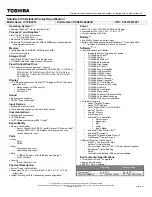
73
Getting Started
Turning off the computer
Turn Off
Factors to consider when choosing the Turn Off command:
❖
Use the Turn Off command if you are not connected to a
domain server.
❖
If you have work in progress and are not connected to a
network, use the Windows
®
Standby or Hibernate commands
to save your system settings so that, when you turn on the
computer again, you will automatically return to where you left
off.
TECHNICAL NOTE: Before using any of these options to turn off your
computer, save your files and make sure all drive activity lights are
off.
If you change your mind and decide to continue working after all,
wait a few seconds before turning the computer on again.
The Windows
®
operating system records information, such as your
desktop setup, during its shutdown procedure. If you do not let the
Windows
®
operating system turn off normally, details such as new
icon positions may be lost.
Hibernation mode
Hibernation mode shuts the computer down completely, but it first
saves the current state of the computer to the internal storage drive.
Since Hibernation mode does not require power to maintain the
saved information, system settings are retained indefinitely.
Factors to consider when choosing Hibernation:
❖
While in Hibernation mode, the computer uses no main battery
power.
❖
Because the state of the system is stored to the internal storage
drive, no data is lost if the main battery discharges.
❖
Restarting from Hibernation takes less time and consumes less
main battery power than restarting from turning off the
computer.
NOTE
















































